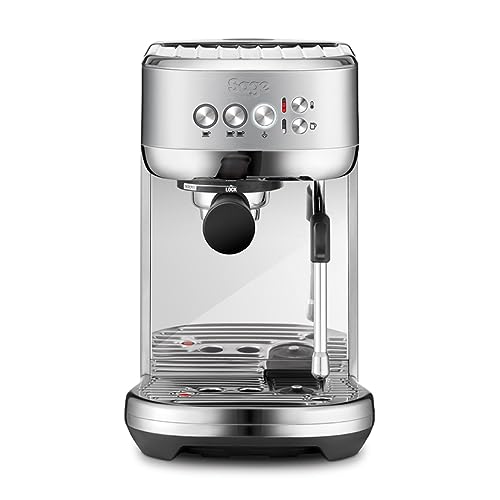9 Lessons Your Parents Teach You About Machine Espresso
How Does machine espresso (content) Work?
Machine espresso employs precise pressure and incredible filter technology to produce the perfect cup of coffee. How exactly does it work?
Espresso is made by forcing hot water at high pressure through finely-ground coffee. The process is similar to making drip coffee. However, the pressure is the major difference.
The Head of the Group
The name implies the group head is where you put your portafilter in when brewing espresso. It is responsible for dispersing water into the portafilter before controlling the pressure of the resulting extraction. There are various kinds of group head, each with their unique advantages and disadvantages. Some focus on temperature stability, some on pre-infusion capabilities, and still others are designed to control the lever. Some come with a combination of both, such as the E61. This is a popular choice among baristas due to the fact that it has multiple benefits in a single package.
As you can see in the image above the group head is made up of numerous notches that you can put your portafilter, then twist it manually to secure it. A gasket of rubber is situated inside the notches, which helps create a seal as you insert your portafilter. The notches on the head permit an exact position of the portafilter which is necessary to ensure a consistent extraction.
The group head is not just able to allow you to insert your portafilter easily, but it also maintains an even temperature. It does this by circulating hot water through the brew basket, and around the portafilter, making sure that it’s always at the right temperature to extract. This is crucial, since just a few degrees could make the difference between a good and great espresso.
The Pump
The motorized pumps in espresso machines that rotate provide the nine atmospheric bar pressure needed for espresso extraction. This is different from manual piston machines that use levers. The pressure builds up by drawing tap water from a reservoir and pumping it through a heat exchanger before being pushed through the ground coffee in the group head.
Pumps are generally less expensive than piston-driven machines and tend to last longer. However, both types of machines may get damaged through overuse and lack of cleaning. Pumps are also more complicated mechanically, which can increase prices of even simplest models.
Certain espresso machines utilize steam pressure instead of a pump in order to brew espresso. This can cause over-extraction because the boiler that produces steam also causes the water to boil. In addition these machines typically have to rebuild their pressure between cups, which takes time and energy.
A majority of espresso machines use the rotary or vibration pump, with a vibration model that uses a vibrating disc that generates the pressure, and an rotary model that pushes hot water through the grounds under high speed. Both machines can make great espresso but rotary machines are quieter, more durable and less likely to break.
 The Boiler
The Boiler
The boiler is used to heat the water to the right temperature to extract. The resulting steam is then transferred to the portafilter, which contains the ground espresso coffee and is then funneled down into the cup. In this process, the steam creates pressure to push through the grounds of the coffee. This results in a layer crema on top. This is one of the main characteristics of a great espresso.
There are three distinct types of espresso machines, each having different pumps and the temperature of the brew. There are various ways to control the amount of brew, as well as the size of cup that can be produced by the machine.
The earliest espresso machines were steam types. The earliest espresso machines were steam-type machines. This resulted in the coffee tasting bitter and burnt. This is the reason why Milanese makers Luigi Bezzerra and Desiderio Pavoni developed the modern espresso machines uk machine.
 The most well-known espresso machine is a semiautomatic that has an electric pump. These are what people imagine when they think of an espresso maker. With a semi-automatic machine you must grind the beans and then tamp them by hand. The pump controls the flow of water and pressure. This is a perfect compromise between human control and mechanised reliability.
The most well-known espresso machine is a semiautomatic that has an electric pump. These are what people imagine when they think of an espresso maker. With a semi-automatic machine you must grind the beans and then tamp them by hand. The pump controls the flow of water and pressure. This is a perfect compromise between human control and mechanised reliability.
The Filter
Typically, espresso machines espresso machines employ a filter to separate out the grounds of the coffee as they go through the hot water. The filter is also a vital element of the machine’s temperature control, as it helps prevent overheating.
It also enhances flavor, since a filter allows for a longer bloom phase. This helps the beans to let their nuances out and provides an opportunity for a better extraction.
It is important bean to cup espresso machines remember that even the most efficient filter can result in a bad cup of coffee. The quality of the beans, and the extraction process remain vital.
It’s here that the magic occurs. This is the reason why espresso tastes so good. The grouphead, also referred to as the brew head, is the place where the portafilter (the thing you put the coffee grounds into) is placed when you’re making espresso.
Steam-driven espresso machines use hot water that is heated inside an airtight container to produce steam. The steam then pushes hot water into the grounds of coffee at high pressure. These kinds of machines are generally less expensive and simpler to maintain than pump-driven models. However, they are not as efficient in their ability to create the ideal conditions for brewing because they operate at 1-1.5 bars of pressure. While the perfect shot requires 9-10 bars.
In recent times, espresso machines powered by a compressed air compressor have become increasingly popular. They utilize an air compressor to push the hot water through the grounds and are much more portable than electric steam-driven machines.

